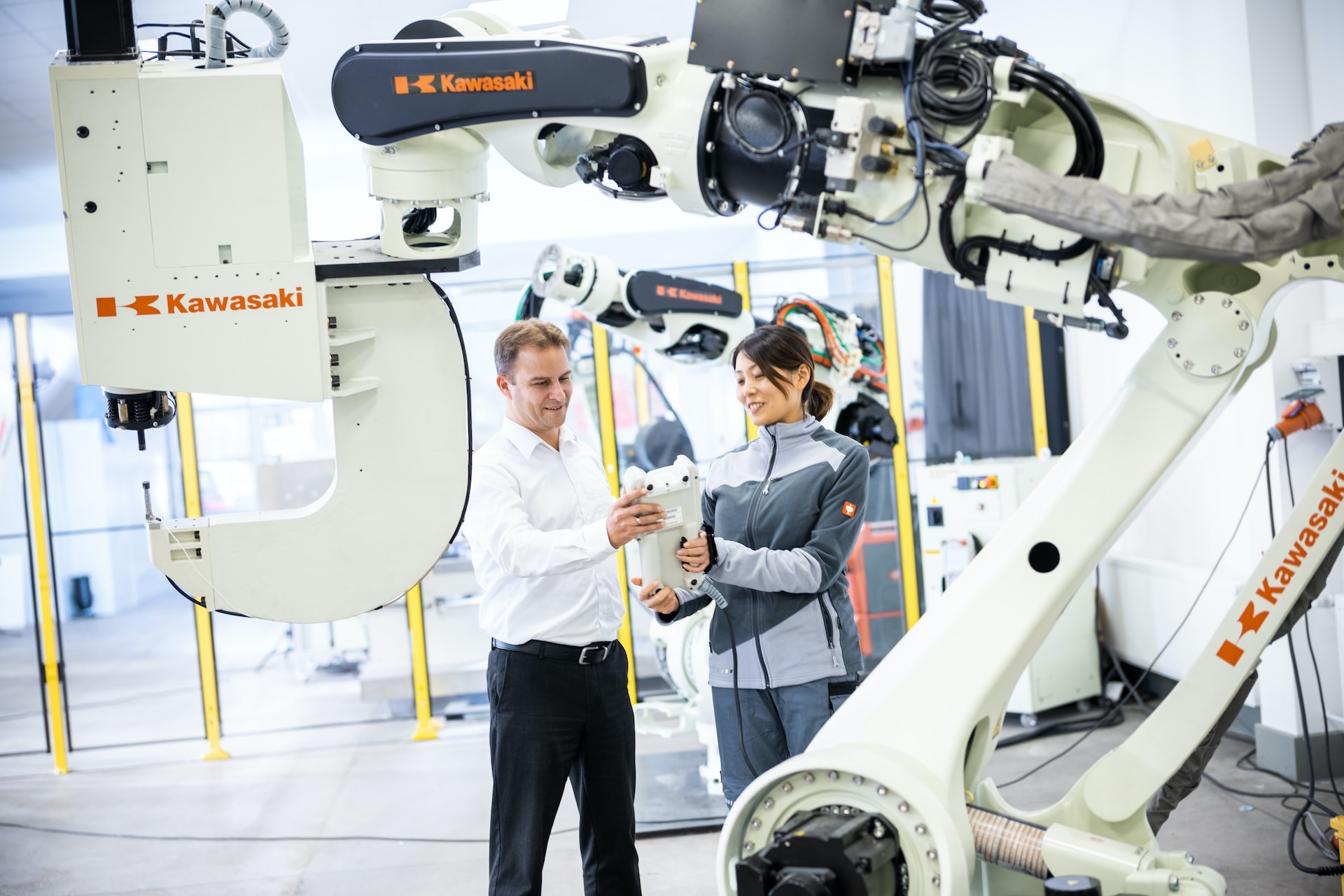
What Are Smart Textiles and How Do They Improve Experiences?
August 24, 2021 - Emily Newton
Revolutionized is reader-supported. When you buy through links on our site, we may earn an affiliate commission. Learn more here.
Smartphones, intelligent speakers and connected home gadgets have become ubiquitous in today’s society. There’s also an emerging smart textiles trend that could change how people benefit from clothing. Besides helping wearers look fashionable, attire can protect them from rain or unpleasant temperatures. However, developments in intelligent textiles could bring even more advantages to the garments people choose.
What Are Smart Textiles?
Smart textiles encompass a broad category of innovations that address known problems or provide desired enhancements. A recent research paper groups such products into electronic and nonelectronic types to highlight the potential diversity.
For example, nonelectronic smart textiles might feature special threads or coatings that absorb moisture or make garments withstand more washing machine cycles. Electronic smart textiles typically include embedded sensors that may measure the wearer’s bodily characteristics or environmental factors. Some garments even change color after receiving a wearer’s smartphone command.
There are also smart textiles that respond to external stimuli. Those include fabrics with shape-memory capabilities or those that can break down certain chemicals, demonstrating self-cleaning performance.
One of the main arguments for smart textiles is that they could reduce the need for bulky electronics. A person may be more likely to track their exercise by wearing innovative athletic gear instead of a wrist gadget. Here’s a closer look at the exciting possibilities in smart textiles that could make them appealing purchases.
Tracking Infant Development
Parents typically watch their infants with extreme care, calling their pediatricians at the slightest possible signs of delayed development or other abnormalities. However, even the sharpest-eyed adults can’t pick up on everything. That’s why researchers at the University of Helsinki created a smart jumpsuit to track babies’ spontaneous and voluntary movements. Observing that data is crucial in verifying whether an infant’s development is on track with peers.
Previous methods of monitoring babies’ movements involved assessing them in a limited window of time during a scheduled appointment. That’s problematic because a baby may not show the same behavior in that environment as at home. Some may be so distressed in unfamiliar places that they don’t move enough for an expert to do a proper assessment.
However, the jumpsuit allows practitioners to send infants home with the attire and instruct parents to have them wear it for a minimum amount of time. Results showed that the jumpsuit offered insights comparable to what a health professional would get by watching the infant on a video recording. This innovation could improve babies’ experiences by enabling data collection in a comfortable, familiar environment.
It’s also crucial that the jumpsuit suits babies from five months and up. Detecting possible neurological issues from a young age is best because it gives parents and practitioners more time to take corrective action if necessary.
Assessing How Well a Helmet Fits
People ranging from motorcycle enthusiasts to horseback riders wear helmets to stay safer during their respective activities. However, poorly fitting headgear could fail to protect the users from impacts when it matters most. Fit also influences how the product feels and functions in other respects. If a helmet is too tight, people might get headaches and sometimes intentionally not wear it. Alternatively, too much looseness could make the headgear slip down or back, causing annoyance and affecting visibility.
A team created a soft cap with fabric-based sensors that map real-time pressure. People wear it under a helmet to gauge how well it fits. Science previously showed that improper helmet fit could raise the risk of traumatic brain injuries. However, no devices currently on the market can show how well a helmet matches a wearer’s head shape.
The researchers began by situating a porous polydimethylsiloxane (PDMS) layer between a pair of fabric-based, conductive electrodes to make the sensors. They then placed 16 of the sensors onto a cap that people wore under a football helmet.
Experiments showed that people with larger heads experienced the most pressure at points around the headgear, especially in the frontal areas. The development of this technology could eventually facilitate engineering for custom-made helmets. It could also provide an option for people who buy off-the-shelf models and want to check the fit before leaving the store.
Promoting Better Sustainability
Manufacturing traditionally concerned making products that lasted for a relatively short period and often required extensive resource usage. There’s now a growing focus on the circular economy, whereby companies proactively minimize resource usage and try to keep products functioning for as long as possible. Success in this aim has positive long-term effects for everyone since it benefits the planet.
Outdoor gear brand Patagonia launched an initiative that teaches people how to fix clothing and other items. It also created a reselling program that gives used items a second life. Those are some practical ways to help the world become more sustainable, but smart textiles play a valid role, too. High-tech, eco-friendly clothing could let people embody their Earth-conscious values by choosing specialty garments.
It’s already possible to purchase organic, recycled and vegan-friendly garments. However, people may have even better shopping experiences if they can easily buy environmentally conscious and smart attire.
Creating Sustainable, Conductive Thread
Scientists are interested in using renewable materials in smart textiles. That could also support the circular economy. A group at Sweden’s Chalmers University of Technology got promising results by using thread made from conductive cellulose. They expanded on that process by using it in a thermoelectric textile that produces a small amount of electricity when exposed to heat on one side.
The textile generates approximately 0.2 microwatts of electricity at a temperature difference of 37°C. It’s easy to imagine the options if a person’s body heat creates the necessary warmth. Another notable achievement was that the cellulose thread works on standard sewing machines.
The team sees particular potential for electronic textiles used for medical monitoring. Christian Müller, the study’s research leader, said, “Cellulose is a fantastic material that can be sustainably extracted and recycled, and we will see it used more and more in the future. And when products are made of uniform material or as few materials as possible, the recycling process becomes much easier and more effective.”
Providing Helpful Alerts
Most people frequently get notifications on their smartphones that tell them about new social media activity, remind them of meetings or urge them to engage in healthy habits. What if smart textiles could also give such timely notifications? Recent research suggests that’s not a far-fetched idea.
Researchers have developed a smart fabric that can detect details about nonmetallic objects. It recognizes objects by picking up on electrical charge fluctuations in the fabric’s electrodes that occur due to changes in an object’s electrical field.
Characteristics such as an object’s size, type of material and the amount of area in contact with the fabric can all cause those differences. The fabric also uses machine learning to determine how an object’s current characteristics compare with the original specifications in a database.
Since the fabric can detect such a wide range of objects — ranging from liquids to paper to fruits — the usage possibilities are expansive, too. For example, the technology can assess a container’s fullness, potentially alerting someone when it’s time to water a plant. Alternatively, imagine if a fussy toddler loses their pacifier, and the fabric could tell a parent that it’s on top of a fabric tablecloth in the kitchen.
Enhancing Overall Well-Being
People are also eager to see how smart fabrics could help people stay healthier or monitor for signs of illness. One recent project from MIT involved a prototype of intelligent clothing with 30 embedded sensors and an accelerometer. The high-tech T-shirt can give real-time readings of a wearer’s heart and respiration rates and send the data to a smartphone. Researchers believe the potential exists to use these smart garments for people recovering from illnesses, as well as athletes and astronauts.
Also, a company called Siren brought a temperature-monitoring sock to the market not long ago. Health care providers can use it to check for early signs of diabetic foot ulcers.
Smart textiles could even help people rest better at night. One example of connected pajamas features sensors that measure a wearer’s heart rate, respiration and posture while sleeping. The attire contains five sensor-filled patches that collect data. That information is then sent via Bluetooth.
Smart Textiles Are the Future
These examples show how intelligent fabrics could enable people to live safer, more satisfying lives. If these products reach mainstream availability, shoppers might make buying decisions based on what additional advantages clothing brings besides helping them remain comfortable and look stylish.
Revolutionized is reader-supported. When you buy through links on our site, we may earn an affiliate commission. Learn more here.
Author
Emily Newton
Emily Newton is a technology and industrial journalist and the Editor in Chief of Revolutionized. She manages the sites publishing schedule, SEO optimization and content strategy. Emily enjoys writing and researching articles about how technology is changing every industry. When she isn't working, Emily enjoys playing video games or curling up with a good book.







